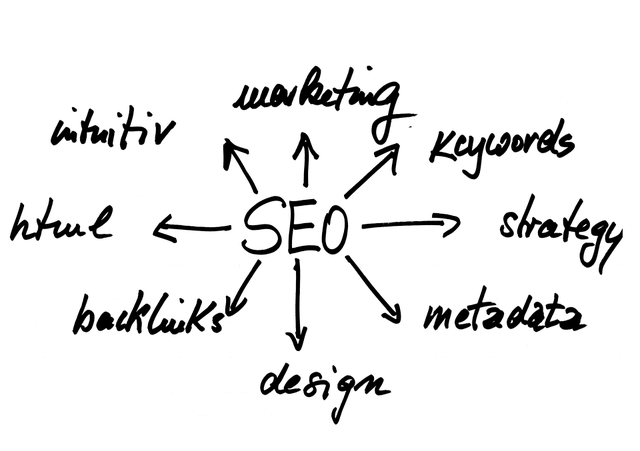JavaScript is a vital driver of modern web development and SEO, with Core Web Vitals Optimization (CWV) playing a key role in boosting search engine rankings. By focusing on metrics like load time, interactivity, and visual stability, developers can enhance user experiences, reduce bounce rates, and improve page performance. Tools like Google Search Console and Lighthouse aid in measuring CWV, enabling data-driven optimizations. Techniques such as code splitting, lazy loading, and browser caching further expedite loading times and user satisfaction. Visual quality, particularly through seamless design and interactive features, boosts engagement and SEO. In a mobile-first era, responsive designs, optimized JavaScript for mobile, and Core Web Vitals Optimization are essential. Structured data and schema markup implementation improve indexing. Analytics tools monitor user behavior, guiding optimizations for better rankings.
JavaScript plays a pivotal role in modern web development, but its impact extends beyond functionality. Effective Core Web Vitals Optimization is crucial for boosting search engine rankings and user satisfaction. This article explores powerful JavaScript SEO techniques that target critical metrics like loading times, interactivity, visual quality, mobile optimization, structured data implementation, and analytics tracking. By mastering these strategies, developers can enhance website performance and drive better organic visibility.
Understanding Core Web Vitals and Their Impact on SEO

JavaScript plays a pivotal role in modern web development, and its efficient use can significantly impact search engine optimization (SEO). At the heart of this discussion are the Core Web Vitals, metrics that gauge user experience on a webpage. These vitals include load time, interactivity, and visual stability, each contributing to a user’s overall perception of a site’s quality. Optimizing these aspects is not just about improving page speed; it ensures that users can seamlessly interact with web pages, leading to lower bounce rates and longer sessions.
Search engines, notably Google, prioritize sites offering fast, responsive, and visually appealing experiences. Core Web Vitals Optimization, therefore, becomes a powerful SEO technique. By addressing these metrics, developers can enhance page performance, making websites more attractive to both users and search algorithms. This approach aligns with modern search engine criteria, ensuring that well-optimized JavaScript implementation contributes to higher rankings and better visibility online.
Measuring and Analyzing Core Web Vital Performance

Measuring and analyzing Core Web Vital performance is a critical step in JavaScript SEO techniques for optimization. Core Web Vitals (CWV) refer to key metrics that gauge user experience on a web page, including load time, interactivity, and stability. Tools like Google Search Console and Lighthouse provide detailed insights into these metrics, enabling developers and content creators to identify bottlenecks and make data-driven decisions. By focusing on CWV optimization, developers can ensure pages load quickly, remain responsive to user interactions, and minimize interruptions, thereby enhancing user satisfaction and search engine rankings.
Regularly monitoring CWV allows for continuous improvement in web performance. Data-driven insights enable the prioritization of changes based on their impact on crucial metrics. For instance, identifying and fixing layout shifts or improving large content load times can significantly boost page experience, reflecting positively in search engine optimization and user retention.
Techniques for Optimizing Loading Time

JavaScript plays a pivotal role in enhancing user experiences on websites, but it’s crucial to optimize its performance for better search engine rankings and user satisfaction. One of the key areas to focus on is Core Web Vitals Optimization, which directly impacts site perception as measured by Google Search Console. Techniques such as code splitting and lazy loading can significantly reduce page load times, ensuring that your website serves content swiftly. Code splitting involves breaking down large JavaScript files into smaller chunks, loading them only when needed, thereby minimizing initial download times. Lazy loading, on the other hand, defers the loading of images or other media until they become visible in the user’s viewport, optimizing bandwidth and expediting overall page rendering.
Additionally, leveraging browser caching can further accelerate subsequent page loads. By instructing browsers to cache static assets like JavaScript files, users can enjoy faster loading times on repeat visits. This optimization strategy not only benefits SEO but also enhances user retention by creating a seamless browsing experience.
Enhancing Interactivity with Smooth Scroll and Input Response Times

JavaScript plays a pivotal role in enhancing user experience and search engine optimization (SEO) through its ability to create interactive web pages. One such technique is optimizing scroll behavior, ensuring a seamless and enjoyable browsing journey. By implementing smooth scrolling, developers can reduce jarring transitions between page sections, making navigation more intuitive. This not only improves user satisfaction but also contributes to better Core Web Vitals Optimization, a set of metrics focusing on page load performance and interactivity.
Furthermore, minimizing input response times is crucial. Efficient JavaScript coding ensures that user interactions, such as button clicks or form submissions, are promptly executed. Quick feedback enhances usability, encouraging users to engage more with the website. Search engines also favor sites that offer fast and responsive experiences, making this an essential aspect of SEO strategy, especially for websites aiming to rank higher in search results.
Visual Quality: Ensuring a Blending User Experience

In today’s digital landscape, Visual Quality plays a pivotal role in enhancing user experiences and boosting search engine optimization (SEO). Beyond fast loading times and performant code, visually appealing websites capture users’ attention, encouraging longer browsing sessions and lower bounce rates—key factors that search engines consider when ranking sites. Core Web Vitals Optimization, focusing on metrics like Largest Contentful Paint, First Input Delay, and Cumulative Layout Shift, ensures that your website’s visuals load and render seamlessly across all devices.
A visually pleasing design not only aligns with core SEO best practices but also fosters a sense of trust and credibility among visitors. This translates into improved user engagement, as aesthetically satisfying websites are more likely to retain users and encourage them to explore further. By prioritizing visual quality, developers can create web experiences that seamlessly blend functionality, aesthetics, and SEO optimization, ultimately driving better search engine rankings and enhanced user satisfaction.
Best Practices for Mobile-First Indexing and Optimization

In today’s mobile-first world, ensuring your JavaScript-powered website is optimized for both search engines and mobile users is paramount. Google’s Mobile-First Indexing means that the mobile version of your site is prioritized in search results. Therefore, implementing a robust mobile-first indexing strategy is crucial. This involves ensuring your site is responsive, with a fluid layout that adapts to different screen sizes. Optimize critical path JavaScript to reduce initial load times, as this significantly impacts user experience on smaller screens. Leverage Core Web Vitals Optimization techniques to enhance the stability and interactivity of your site, making it more engaging for mobile visitors.
Focus on minimizing resource request failures and maximizing successful downloads. This can be achieved by implementing lazy loading for non-critical JavaScript files and optimizing images. Fast loading times are key to keeping users engaged, reducing bounce rates, and improving search rankings. Additionally, consider using modern JavaScript features and frameworks that offer better performance out of the box, further enhancing your site’s mobile SEO.
Leveraging JavaScript for Structured Data and Schema Markup Implementation

JavaScript offers powerful tools for enhancing search engine optimization (SEO) through structured data and schema markup implementation. By leveraging these techniques, developers can provide search engines with valuable context about a webpage’s content, leading to improved indexing and potentially better rankings. Structured data allows search engines to understand complex information on a page, such as product details, reviews, or events, making it easier for them to crawl and display relevant results.
Schema markup, in particular, provides structured vocabularies that enable developers to mark up specific elements of a webpage. This helps search engines identify and categorize content accurately, which can positively impact Core Web Vitals Optimization. By ensuring that critical elements like headings, meta descriptions, and interactive elements are optimized using JavaScript, websites can achieve faster loading times, improved usability, and better performance, all of which contribute to enhanced SEO outcomes.
Monitoring and Refining Your Strategy Using JavaScript Analytics Tools

In the realm of JavaScript SEO, monitoring and refining your strategy using analytics tools are pivotal steps to enhance search engine rankings. These tools offer a deep dive into user behavior, page performance, and critical metrics like Core Web Vitals (CWV). By leveraging JavaScript analytics, developers can identify pain points and make data-driven decisions to optimize the user experience. CWV, which includes load time, interactivity, and visual stability, directly impact how search engines perceive and rank web pages.
Effective monitoring involves setting up goals and events within analytics platforms to track specific user interactions. This enables developers to pinpoint areas where JavaScript may be hindering performance or user engagement. With this intelligence, they can refine their code, implement faster loading scripts, and enhance interactivity, ultimately contributing to a better search engine optimization outcome.
